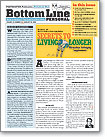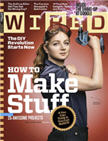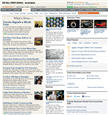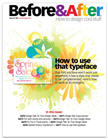Inspiration
I'm now in the ninth year of writing this monthly letter. And before I got started with this crazy thing, I published several other long-running newsletters (paper versions). If you've been with me for a while, you know I don't stick to any particular subject. That makes it fun, but also a challenge. I'm always on the prowl for a new topic to cover. Where do article ideas come from? Frequently, it's something of personal interest that I'm eager to explore and then share. But sometimes inspiration comes from books, magazines, and online material. Here are a few of the publications that have sparked new ideas and inspired me:
 |
Bottom Line Personal bottomlinesecrets.com
Bottom Line (Boardroom, Inc.) publishes a number of top-quality and completely advertising-free newsletters, written by well-credentialed experts in a variety of subjects. My favorite is Bottom Line Personal. Twice a month, they pack 12 pages full of interesting articles on personal finance, health, career guidance, consumer technology, nutrition, car and home, parent/child issues, travel, and many, many other topics. I often find articles worth clipping and sending to my friends and work contacts.
Take-away: presenting "general interest" topics in a fresh way, delivering content that's credible, timely, and actionable (and worth paying for). |
 |
Wired Magazine wired.com
I subscribe to about 2 dozen magazines but if I had to make a "Sophie's Choice," and cancel every subscription but one, I'd choose Wired. No other magazine consistently delivers the engaging, forward-looking content you'll find here. The wired.com online site is great too, but the print version provides the full-on magazine reading experience, with superb graphic design, typography, photography, etc. Even the ads are edgy and often unique to the magazine.
Take-away: discovering new topics I didn't know I wanted to know about! |
 |
Wall Street Journal Online wsj.com
I used to start every day by thumbing my way through the Journal but now I'm spoiled by the WSJ online version and couldn't imagine going back to smudgy ink on paper. Instead of reading headlines to find articles of interest, the dot com version enables me to very quickly scan through everything and then hone in on the articles I want and need to read, many enhanced with videos and photo slide shows. Some people complain that the Journal's quality of reporting has gone down but that hasn't been my experience. Sure, there are some silly articles now and then, but I have yet to find another paper that covers the business world quite as well, yet includes enough context and lifestyle material to keep it engaging.
Take-away: how the Journal makes business and finance topics accessible to a wide range of readers. |
 |
Seth Godin's Blog sethgodin.typepad.com
Straight off I must tell you that was never a fan of blogs. In general, I find they're often too soap-boxy, too snarky, or too amateurish. I'm looking for information and ideas, not one person's random opinion. I don't want to go off on a rant about this, but I feel the same way about blogs as I do about Twitter: there are very, very few people whom I'd ever want to "follow." Well, I've finally found someone whose writings are well worth reading every day.
Take-way: very few people are true thought leaders who can deliver on a consistent basis. I'm hugely impressed with Seth Godin's ability to communicate a message worth pondering... every single day. |
 |
Before & After bamagazine.com
John McWade has been publishing this one-of-a-kind magazine for more than a decade and I've been a subscriber since Issue #1. Despite being primarily intended for those who work in graphic or web design, I've found B&A incredibly helpful as to me as a "non-professional" designer. I credit John with teaching me to develop a critical eye and a sensibility to design that I apply in my work on a daily basis (and in this letter too). The magazine is equally good in print or as a PDF, and John has recently begun to deliver short video segments of very high caliber.
Take away: you can't be a good communicator with words alone anymore. To convey ideas and persuade, it's now necessary to deploy multiple forms of media. Everything has to look sharp, serve a function, and "work." |
That's my short list. I'm sure you have your own favorites. If you think I'd like something, please send it over.

Return to Archive |





